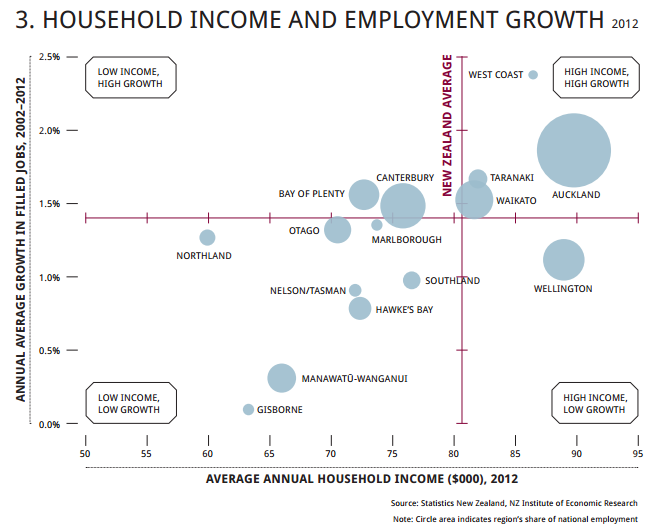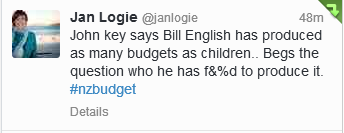Its a rant, no denying it.
I tried, I really tried.
Firstly I ignored all the reports coming out of Dunedin in the wake of Winstonfest 2016 that it will turn into a cat fight between Ron Mark (long serving but foul mouthed NZ First 2IC) and political mercenary Shane Jones over who will succeed Winston when he finally steps down (whenever that actually is) in one of the more interesting cases of “get your hands off my man!) We have seen in a while.
I turned the other cheek to Colin Craig’s sleazy behaviors being exposed in the press. If his chances of being an MP were slim to none before they are effectively nil now as it looks like his fellow party members (Christine; she of the extravagant spending while a civil servant, Rankin) are more than willing to publicly twist the knives in his back; also the man writes love notes with about as much passion and enthusiasm as a politically conservative Christian businessman running for office, oh wait…
But it got harder after John (I for one welcome our new reptilian overlords) Key blamed kiwi workers being lazy and drug addled as the reason for National having the immigration policies it does. Key (no pun intended) point: importing low skill workers under the guise of student and other visas allows employers to drive down wages and places anyone not willing to work for the same pay and conditions in employment limbo*. This is the equivalent to shooting someone in the foot and then complaining that they can’t walk.
By Wednesday it was getting much more difficult to tune out the noise when the government announced that it was spending 24 million dollars on housing in Auckland when the average house price was now “one meellion dollars†(which as many commentators gleefully pointed out) meant that there would be just another 24 houses up for grabs; Winston Peters decided that hypocrisy was the better part of valor (by taking someone’s money and then accusing them of being a front for the National Party); the Auditor General cleared the Niue hotel deal (but did admit that their hands were tied and their range of investigation limited); the Chiefs found themselves unable to say sorry to the one person they really needed to say sorry to (showing how much our sporting culture remains a bastion of macho BS); the blather about Helen Clark at the UN continued despite it being made clear she is not the preferred candidate (get over it, she is not going to be Sec Gen); Andrew Little called for Nick Smith to resign (about as useful as firing the captain of the Titanic after it hit the iceberg) and our beloved PM now saying NZ and OZ are still BFF’s (despite OZ deporting back all those its deems no longer BFF and treating kiwis living there like second class citizens). I had to laugh though when the Stuff article reporting this had to include an explanation of what a BFF was.
But what finally sent me over the top was watching parliament go into melt down over the housing situation with question time being cancelled and the government fumbling the ball as the process was hijacked by the opposition. Of course it’s not one of those overseas style parliamentary melt downs like they have in Taiwan or the Philippines with legislators throwing chairs, starting bonfires in the middle of the chamber or fist fighting in the aisles (although I would have tuned into parliament TV if such things were scheduled) but just some filibustering which will peter out sooner or later.
The reason why this particular event, in a week of hard core political gibberish sent me over the top was that it perfectly encapsulates the reason why we are in the situation in the first place.
The Housing Hernia continues to grow and the chances of all this shouting and filibustering (or for that matter any wet-paper bills) actually producing a solution are zero. We have been there and we have passed the point where this process is manageable by some quick fixes or legislative tweaks and we are now heading into territory marked more by backbiting, squabbling, lots of weasel words and no actual action on the matters at hand.
You would almost think that campaigning for the 2017 election had started but this is really just a small hint of what the 2017 election will be like. If you thought that vapid hot topics and political push button issues were going to have our politicians shouting, parading and grandstanding like no tomorrow now then you ain’t seen nothing yet!
And this is the state we are in today: political ineptitude and inaction; corruption and tabloid sleaze; empty political gestures over any genuine action; political infighting; low quality political journalism as a substitute for discourse (I get the irony of writing that) and issues which need genuine attention not more political verbiage.
The summation of the situation came to me last week, as I and several co-workers were in a taxi crawling out of Auckland’s CBD towards the airport, knowing that we had given ourselves over an hour to get to the airport but still not sure if we would make it, by the taxi driver who summed up Auckland’s transport problems in one succinct sentence.
“Auckland’s roads were built when Auckland had about 800,000 people living in it, today its about 1.4 million people and by 2020 it’s expected to have 2.2 million people but all attempts to fix the roads or improve transportation have been blocked or failed.â€
Even if those numbers are out somewhat the metaphor remains painfully correct and applicable to NZ at large.
In areas like immigration, housing, the environment and all the rest we are now in a state where what we had is no longer able to cope with what we have got and the people responsible for sorting these problems out (those we elect to run this country for us) remain either unwilling (in the case of National clearly captured by those who are making coin of our current misfortune) or unable (in the case of Labour being too busy sucking up to potential voters and their mortgages to ever rock the boat) or putting their own personal gain over the general welfare of the country (Winston, Peter Dunne and the rest of the gumboots) to do anything about it.
So with that in mind I am no longer able to refrain from comment (I really wanted to keep on with research on Asia for upcoming posts and not get sidetracked). I assume that this week is a combination of moon, tide, weather, biorhythms, the stock market and all sorts of other factors which have produced the political crapfest this week has been so far, and its only Thursday!
And it’s the tone of events which is the most ugly, like other countries the problems are piling up and those supposed to be in charge are turning out to be incompetent middle managers at best and corrupt clowns at worst (I favor the latter).
All of this points to the 2017 election being a real watershed election as these issues won’t go away between now and then and will surely continue to worsen while the clowns continue to bicker over ticket prices to the circus while the tent burns.
I won’t play the doom scenario card too much but we live in interesting times to say the least and calls for action continue to grow. Our current political model is not working very well but will we get any viable alternatives?
Come campaign time I expect all of these little hot potatoes to remain hot and a lot of promises to be made to fix them to an electorate which will be in an ugly mood and in no mind to hear political and economic catamites parading around shouting dogma as solutions to rising waters. Dirty politics will be front and center and media manipulation will be all over the place.
The outcome? Polarization and a parliament less and less able to address the issues (under a minority Green/Labour government with Winston staying neutral) or worse Winston backing our dear leader Key followed by further economic shenanigans from his minions for another three years (imagine the housing hernia in three years time!) or the unthinkable and a Green/NZ First/Labour hate triangle of rivalries and poison looks until its inevitable implosion.
But we kiwi voters are not blameless in this, we tolerate this state of affairs and we continue to vote for the same ugly faces, their ugly messages and their ugly acts. We are as stained and muddled as those filthy beasts in Parliament. Politics has made monsters of us all!
*- The fact that Barry Soper in the Herald felt that such a position had some merit shows how pernicious such BS attitudes are as well as highlighting how out of touch Soper is to the reality of situation (but then I never really liked his reporting anyway).


